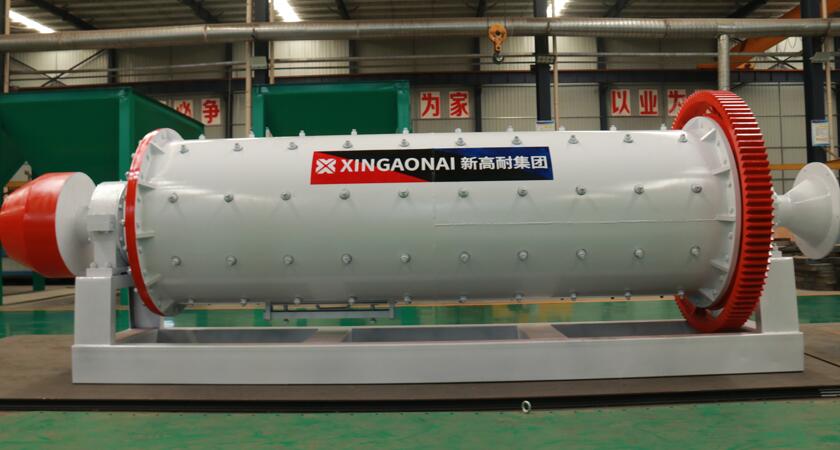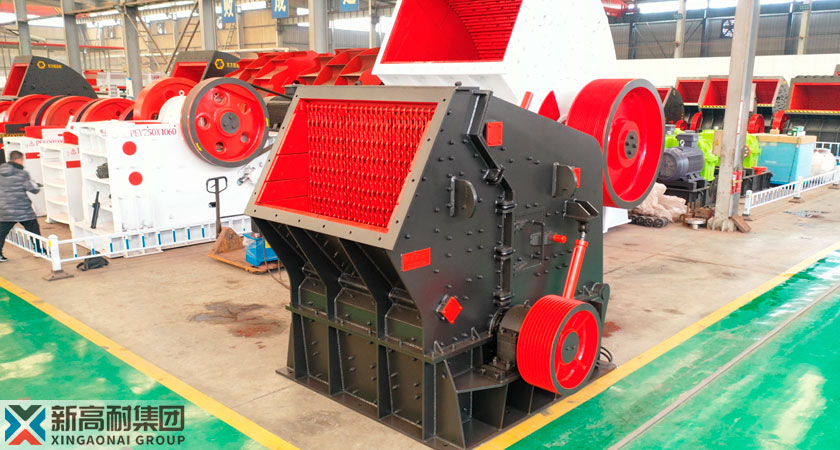Meaning, types and uses of tourmaline
 Xingaonai
Xingaonai
![[list:date style=M.d,Y]](/images/date.png) Mar.16,2025
Mar.16,2025
 18
18
If you want to know more details about equipment, solutions, etc, please click the button below for free consultation, or leave your requirements!
Introduction to Tourmaline
Tourmaline is an inorganic compound, a complex borosilicate mineral. Tourmaline, also known as tourmaline, is mainly composed of aluminum, iron, magnesium, manganese, lithium and other elements. It is a common gem mineral, and because of its rich composition, it has formed a variety of color variants, and is loved for its unique color and energy properties. In addition, it also has unique electrical and optical properties.
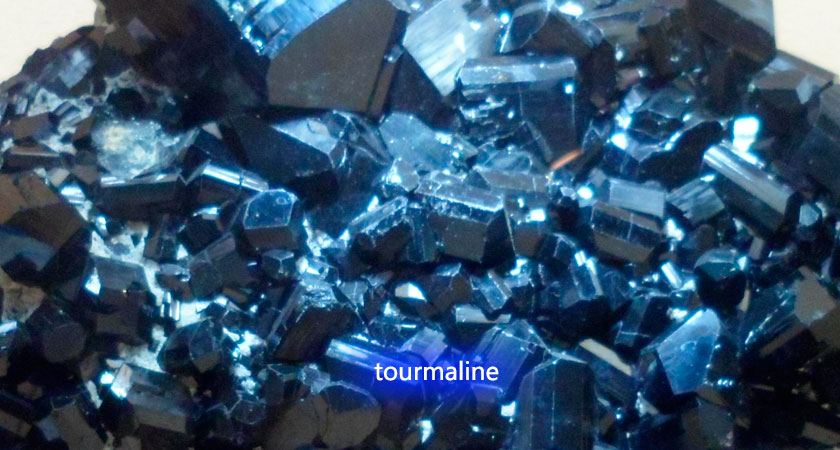
Meaning of Tourmaline
Tourmaline is a powerful crystal stone, unique for its pleochroism, piezoelectricity and pyroelectricity. It symbolizes protection, purification, power, spiritual growth, health, wealth, love and creativity in different cultures and spiritual practices, and is widely used in spiritual healing, jewelry, feng shui and other fields.
Pink tourmaline represents the connection to the heart chakra, promoting love, emotional healing, and improving interpersonal relationships.
Green tourmaline represents vitality and growth, helps attract wealth and enhances creativity.
Blue tourmaline represents the connection to the throat chakra, promoting communication, wisdom and intuitive ability.
Black tourmaline represents the connection to the root chakra, enhancing security and stability, and helping people to be down-to-earth.

Characteristics of Tourmaline
Physical characteristics: Tourmaline contains elements such as iron, manganese, chromium, lithium, and aluminum, making its colors varied, with common colors being black, pink, green, and blue. It has a glassy luster, a hardness between 7-7.5, belongs to the trigonal system, and the crystals are columnar with stripes on the surface.
Chemical characteristics: The chemical formula of tourmaline is Na(Mg,Fe,Li,Al,Mn)ŌéāAlŌéå(BOŌéā)ŌéāSiŌéåOŌéüŌéł(OH)Ōéä. It has good stability, but is easily corroded in strong acids and alkalis.
Other characteristics: It generates electric charges when heated and compressed, making it thermoelectric and piezoelectric. In addition, tourmaline is also rare and diverse, from the common black tourmaline to the rare Paraiba tourmaline. In particular, Paraiba tourmaline has become a precious gem with a high price due to its unique color and scarcity.
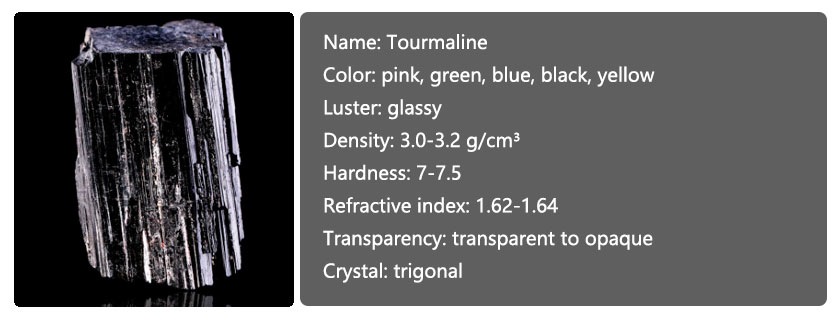
Types of Tourmaline
Classification by color: red tourmaline, green tourmaline, blue tourmaline, black tourmaline, yellow tourmaline, colorless tourmaline.
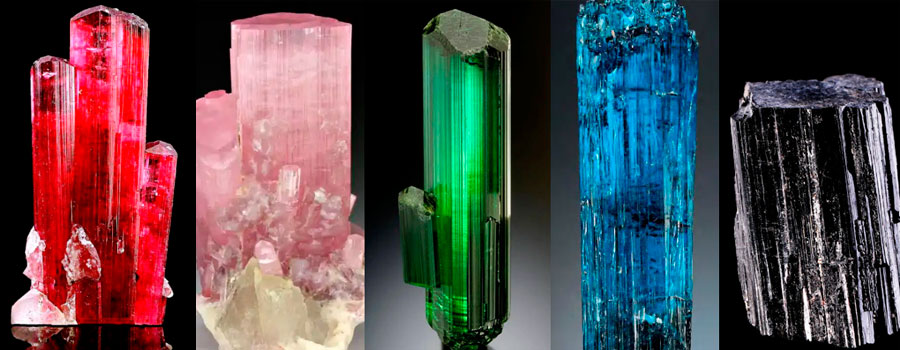
Special types: watermelon tourmaline, Paraiba tourmaline, chrome tourmaline.
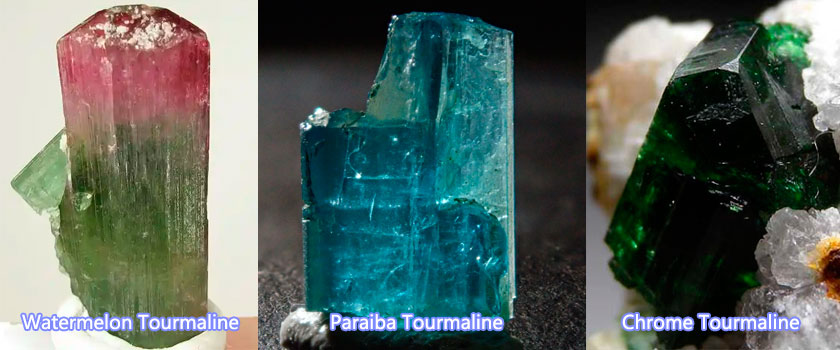
Classification by composition: lithium tourmaline, magnesium tourmaline, iron tourmaline.
Other types: bicolor tourmaline, multicolor tourmaline.
Uses of Tourmaline
Jewelry industry: Tourmaline has rich colors and beautiful luster. It is often used in jewelry designs such as rings, necklaces, bracelets, and earrings, becoming a beautiful and symbolic gem. In particular, rare varieties such as watermelon tourmaline and Paraiba tourmaline are favored by jewelry collectors.
Health and wellness: Tourmaline can release negative ions, which not only helps improve blood circulation, relieve pain and fatigue, but also improve air quality, so it is used to make health products.
Environmental purification: Tourmaline is used for air purification and water purification, and can absorb and decompose harmful substances such as formaldehyde and benzene.
Textile industry: Tourmaline powder can be added to fibers to create textiles with antibacterial, deodorizing, and warming functions.
Building materials: Tourmaline is used as an additive for environmentally friendly coatings, which can release negative ions and improve indoor air quality.
Agriculture: Tourmaline can be used as a fertilizer additive to improve soil fertility and crop growth quality.
Electronics industry: The piezoelectricity and thermoelectricity of tourmaline make it have certain applications in electronic devices, such as sensors and detectors.
Cosmetics and skin care products: The trace elements in tourmaline are considered to be beneficial to the skin, so they are added to some cosmetics and skin care products.
Medical field: Tourmaline is also used in some medical equipment and treatments, such as physiotherapy devices.
Industrial materials: Tourmaline's wear resistance and heat resistance make it have certain applications in industrial materials, such as abrasives, refractory materials, etc.
Energy field: Tourmaline's thermoelectricity makes it have certain application potential in energy conversion and storage devices.
Collection and investment: High-quality tourmaline has appreciation potential, and rare varieties such as Paraiba tourmaline have high collection value.
Research and Education: Tourmaline can be used to study mineralogy, crystallography and geochemistry.

Processing of Tourmaline Powder
The processing steps of tourmaline powder mainly include raw material preparation, crushing, grinding, screening, grading, drying and packaging.

Author: Xingaonai
Reprint address: http://xingaonai.cn/products-knowledge/tourmaline-meaning-types-uses.html
 +86 17761642222
+86 17761642222 sales@xgnchina.com
sales@xgnchina.com




 Message
Message Chat Now
Chat Now






